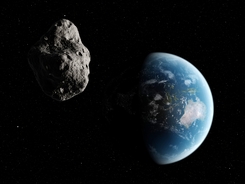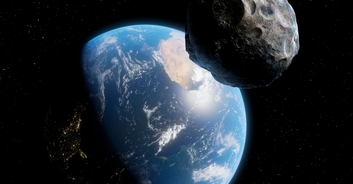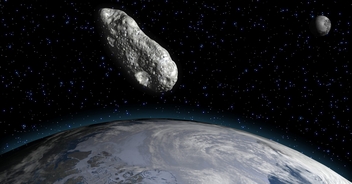On Tuesday, May 15, an asteroid roughly the same size as the Statue of Liberty is expected to whizz by planet Earth, with scientists and astronomers eagerly anticipating its appearance. The celestial object, which has been named '2010 WC9' will fly past our planet at an estimated distance of 126,000 miles from the Earth's surface. In case you're wondering, that's roughly about half the distance between the moon and the ground, so don't worry: there's no chance of it colliding with any planes or tall buildings.
According to NASA's Centre for Near Earth Object Studies (CNEOS), 20 WC9 is predicted to appear in the sky at approximately 6.05pm, Eastern time. It's expected to be one of the closest approaches ever observed for an asteroid of its size: between 197 to 427 feet in diameter. This would make it far bigger than the Chelyabinsk meteor, which entered Earth’s atmosphere on February 15, 2013. This particular meteor was captured on video by numerous stunned observers and went on to cause a great deal of damage: breaking windows in six different Russian cities and injuring 1,500 people.
In contrast, Asteroid 2010 WC9 won't be visible to the naked eye, with its speed of 28,655 miles per hour making it difficult for a bystander to observe it. Amateur astronomers might get lucky if the object reaches a stellar magnitude of +11; making it bright enough to be seen by ordinary telescopes pointed at the right place at the right time. But even then, the best you can hope for is a quick glimpse.
But it's good news for the professionals. In a recent interview with EarthSky, Guy Wells, a representative from Northolt Branch Observatories, stated: "We are planning to broadcast this asteroid live to our Facebook page ... The broadcast will be less than 25 minutes in duration, as the asteroid will cross our field of view within that period of time. The asteroid will be moving quite rapidly (30 arcseconds per minute). Our display will update every five seconds. We are of course collecting astrometric data while this is happening, but the motion of the asteroid will be apparent every five seconds!"
The asteroid in question was first spotted by scientists working for the Catalina Sky Survey in Arizona, on November 30, 2010. However, it was lost on December 10 after its trail became too faint to see. But eight years later, on May 8, 2018, astronomers discovered a new asteroid, which they named 'ZJ99C60' before they realised it was actually asteroid 2010 WC9 after all. So, if you're a keen stargazer, then keep watching the skies tonight. Who knows? You might get lucky.




.jpg_wQ08zr?tr=h-184)
